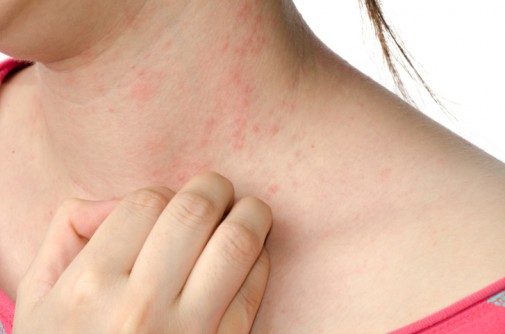Is it a rash or psoriasis?

To the average person, a rash is just a rash. But to the trained medical eye, you may be dealing with an inflammatory skin condition called psoriasis.
Psoriasis affects up to 2.2 percent of Americans, according to the National Psoriasis Foundation (NPF). That’s about 7.5 million people. All races and both genders can be affected, and it often develops between the ages of 15 and 25.
So how do you know if you might be one of those people?
Look for these signs:
- Psoriasis tends to affect both sides of the body equally, on your elbows, knees, scalp and torso.
- It may or may not itch.
- The rash starts out looking like a pink or red spot that becomes covered with a white or silvery scale over a few weeks.
- The scale can sometimes be loose and leave a mess on your clothes and sheets.
- The rash can be worse in areas that are traumatized or scratched.
Between 10 and 30 percent of people with psoriasis also develop psoriatic arthritis, reports the NPF. This can cause pain, stiffness and swelling at the joints, particularly in the fingers, toes, knees and ankles. Although psoriatic arthritis can occur at any time, it most commonly develops between the ages of 30 and 50.
Several factors may influence the onset of this disease, including your genes, your immune system and environmental conditions. But severe psoriasis, which affects more than 10 percent of your body, does not necessarily mean you’ll develop a severe case of psoriatic arthritis.
Psoriasis has also been linked to many other systemic, inflammatory diseases. People with psoriasis may be more likely to have heart attacks, strokes and other serious health problems.
Although there is no cure for psoriasis or psoriatic arthritis, available treatments are can alleviate the symptoms, including:
- Topical treatments. Medications applied to the skin are usually the first treatment option. These medications reduce the inflammation associated with the disease and improve the symptoms and the red, scaly appearance. Many topical treatments are available over-the-counter, but the strongest and most effective require a doctor’s prescription.
- Phototherapy or light therapy. During phototherapy, the affected skin is repeatedly exposed to controlled doses of ultraviolet light under medical supervision. You can get this treatment at your dermatologist’s office, in a psoriasis clinic, or even at home with a phototherapy unit. The treatment must be administered regularly to be effective.
- Systemic medications. These medications are used for patients with moderate to severe psoriasis and psoriatic arthritis that does not get better with other treatments. Taken orally or injected, these are available by prescription only.
People with psoriasis should also be screened for diabetes, high blood pressure, abnormal cholesterol levels and other factors linked to heart disease and stroke.
If you suspect that you or someone you know may have psoriasis, see a dermatologist soon to get properly diagnosed. If left untreated, psoriasis can cause more serious health problems.
Related Posts
Comments
About the Author
Dr. Alix Charles is a dermatologist on staff at Advocate Good Samaritan Hospital.

















